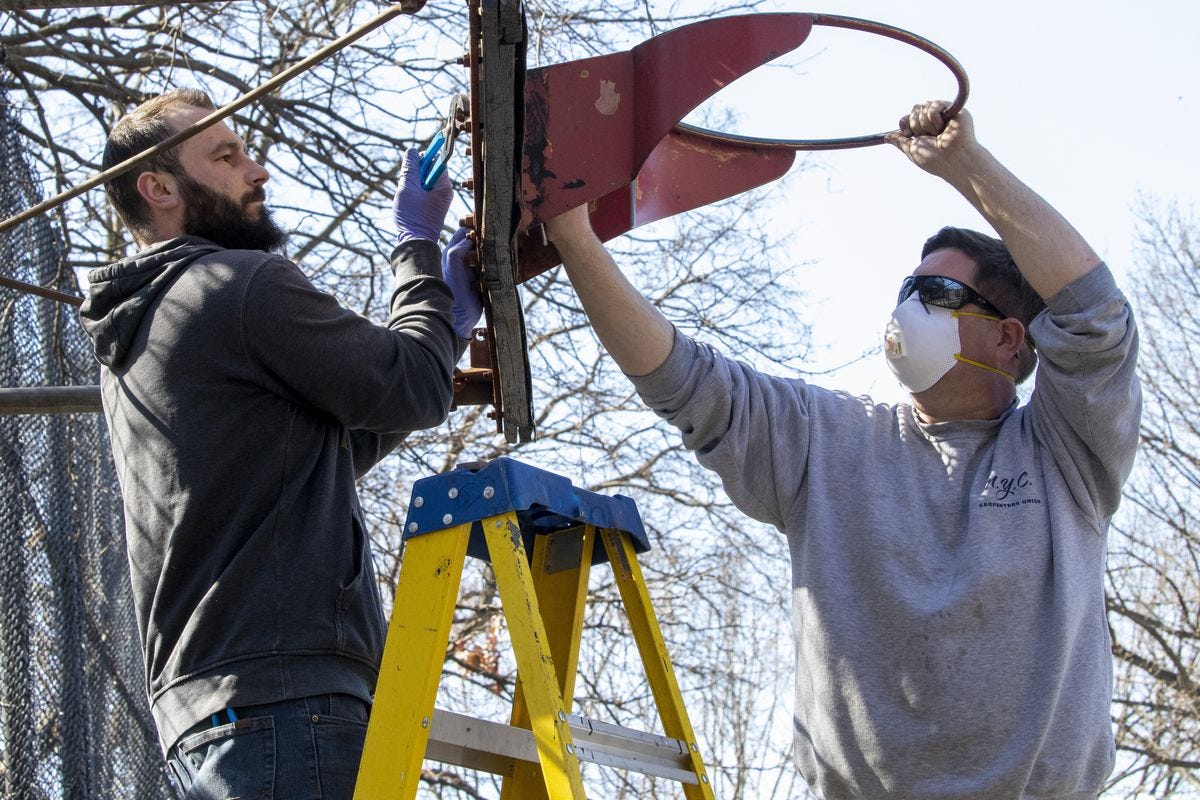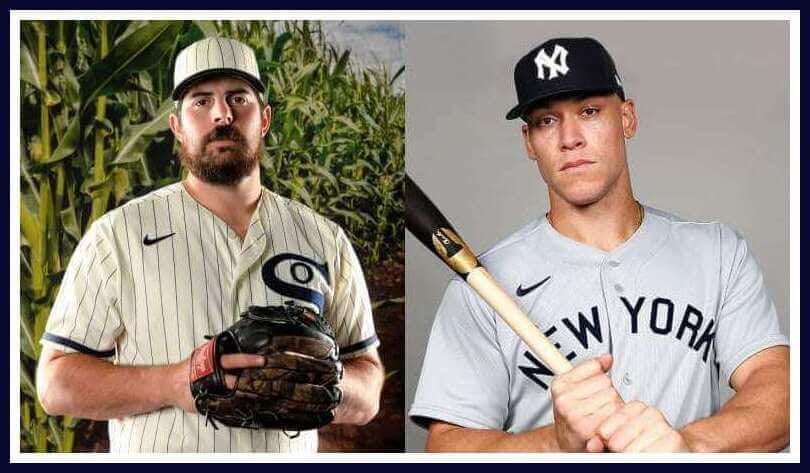Noah here. The New York Times recently ran a nice little piece on Anibal Amador, a 55-year-old Manhattanite who likes to play basketball and has taken matters into his own hands to ensure that every clean shot he takes gets an accompanying swish of the net.
So, with the help of a step ladder that he brings from his apartment, Amador fastens the nets to the rims at a few select playgrounds — mostly the ones where he likes to play — near where he lives in Murray Hill. He has adorned rims on 36th Street, at a playground on East 26th Street and another near Bellevue Hospital. He says he has been doing this for about three years.
The city has some 1,800 courts, and while they take great care in providing backboards and rims, nets aren’t part of the equation.
Why is this interesting?
All this talk about New York City basketball made me think of another New York Times story from a decade earlier about the amazing process that goes into making basketball rims in the city:
These unforgiving, practically unbreakable orange rims built so simply that there are no hooks to accommodate a net are longstanding fixtures of the public basketball courts throughout New York City, where they play a minor, if usually overlooked, role in countless pick-up games.
But largely unknown to even the most devoted practitioners of the city game is that most of the basketball rims on these courts have been individually crafted by a team of blacksmiths who cut, weld and paint each by hand.
Using a century-old method that has long since vanished elsewhere, the half-dozen parks department employees all basketball players themselves have forged thousands of rims, each one worked into a microcosm of the local game.
Photo of an NYC hoop being taken down during peak COVID
At the time, the article noted that the practice was partially on its way out, with some prefabricated rims being hung around the city. But walking around, it’s still easy to spot the iconic heavy-duty NYC design. What’s more, it’s one of those amazing reminders about the impacts of scale. It’s not entirely different from how McDonald’s became the largest buyer of apples in the United States after it started offering them in the early 2000s. New York is the biggest city in the US and, as a result, likely sees the heaviest use of its parks and hoops. When you exist at those kinds of scales, it totally changes the lens through which you view the world. Sometimes the only way to operate in those environments is to figure it out yourself. (NRB)
Uniforms of the Day:
This evening the Yankees and White Sox are playing a game at the Field of Dreams baseball field. They’ve outfitted both teams with some throwback attire, complete with a period-correct swoosh to commemorate the occasion. [Thx to Ryan M for the perfect phrasing.] (NRB)
Quick Links:
Great Messi article: The little devil who became a deity: Messi exit leaves a void like no other (NRB)
I recently re-read Kevin Wilson’s novel Nothing to See Here, which is so so good. (NRB)
In case you were wondering: Why do Brooklyn and Queens have their own public library systems?
[Sponsored Link] Noah here. New week, new links for my company, Variance. We are building a PLG CRM to help software companies grow their customers. Of possible interest to WITI readers is a recent post on why we decided to publish all our culture docs and some writing on PLG Content Marketing. Get in touch if you have questions or want to learn more. (NRB)
Thanks for reading,
Noah (NRB) & Colin (CJN)
—
Why is this interesting? is a daily email from Noah Brier & Colin Nagy (and friends!) about interesting things. If you’ve enjoyed this edition, please consider forwarding it to a friend. If you’re reading it for the first time, consider subscribing (it’s free!).




